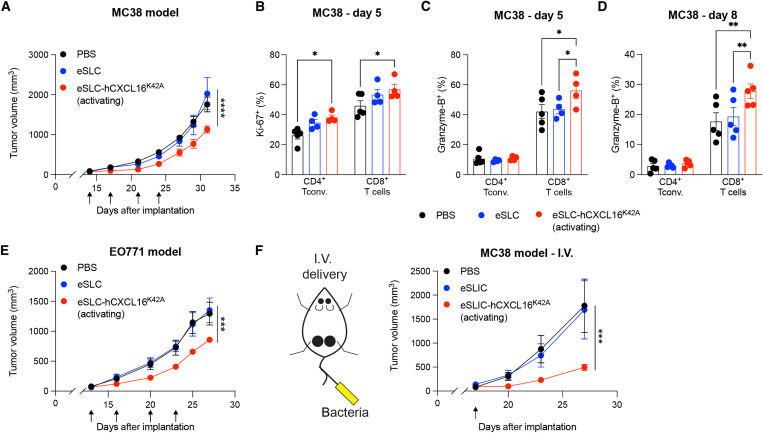Fig. 4. Activating hCXCL16K42A strain offers therapeutic benefit in colorectal and breast cancers.
(A) Tumor growth curves from C57BL/6 mice (n = 5 per group) subcutaneously implanted with MC38 colorectal tumor cells on both hind flanks that received intratumoral injections (indicated by black arrows) with the indicated strain. Data are representative of four independent experiments (****P < 0.0001, two-way ANOVA with Holm-Sidak post hoc test at the final time point). (B to D) Flow cytometric analysis of tumor-infiltrating lymphocytes from subcutaneous MC38 tumors (n ≥ 4 mice per group) on (B and C) day 5 or (D) day 8 following intratumoral injections [as in (A)]. (B) Frequencies of intratumoral Ki-67+ CD4+Foxp3− and CD8+ T cells. (C and D) Frequencies of intratumoral Granzyme-B+ CD4+Foxp3− and Granzyme-B+ CD8+ T cells on (C) day 5 after injection and (D) day 8 after injection. For (B) to (D), data are representative of three independent experiments (*P < 0.05 and **P < 0.01, two-way ANOVA with Holm-Sidak post hoc test). (E) Tumor growth curves from C57BL/6 mice (n = 5 per group) subcutaneously implanted with EO771 tumor cells on both hind flanks that received intratumoral injections (indicated by black arrows) with the indicated strain. Data are representative of two independent experiments (***P < 0.001, two-way ANOVA with Holm-Sidak post hoc test at the final time point). (F) C57BL/6 mice (n ≥ 5 per group) subcutaneously implanted with MC38 colorectal tumor cells and received a single intravenous injection (black arrow) of the indicated strain. Data are representative of two independent experiments (***P < 0.001, two-way ANOVA with Holm-Sidak post hoc test at the final time point). Data are displayed as means ± SEM.

